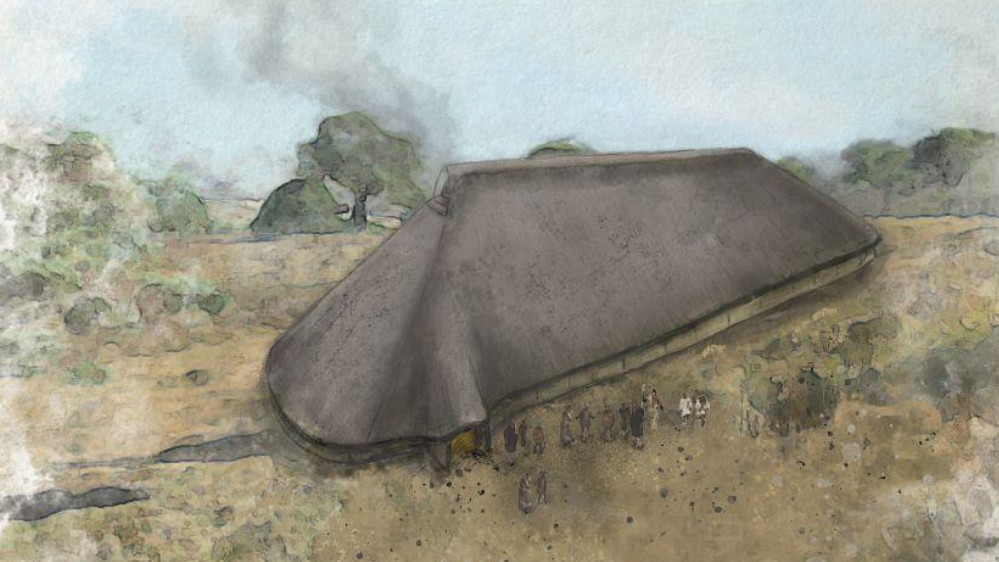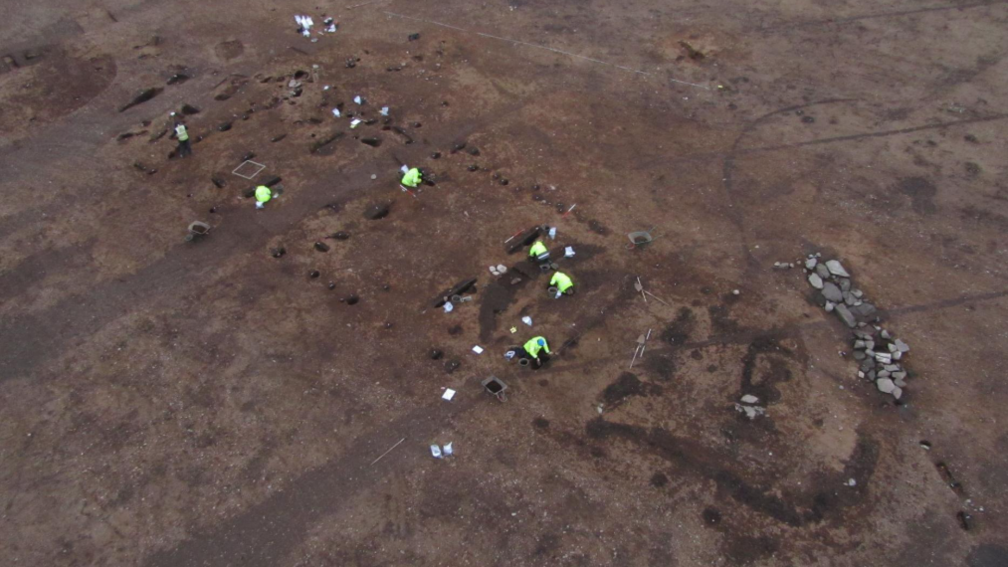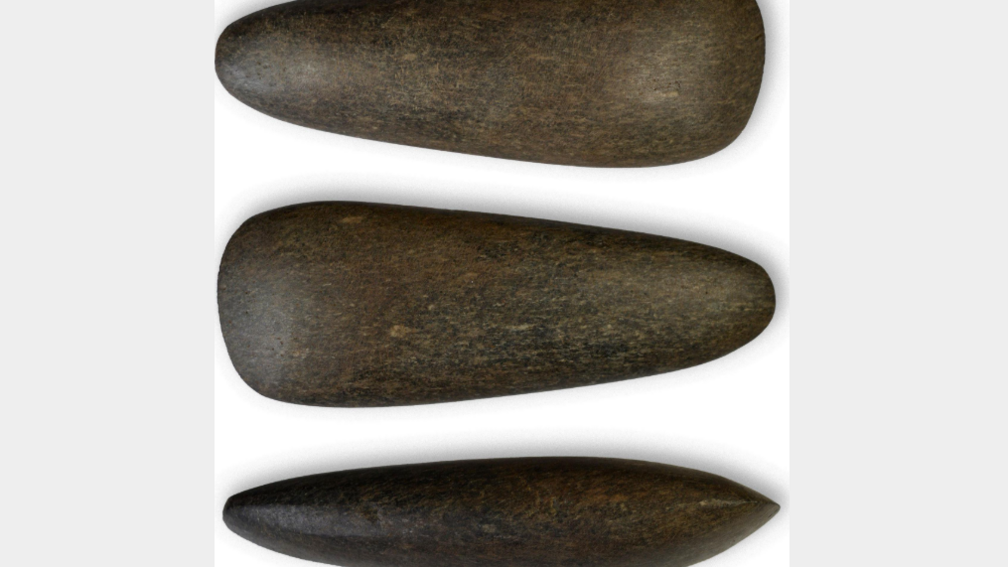Ancient Stone Age farming hall discovered at Scottish school

An artist's impression showing how the hall might have looked
- Published
Archaeologists have found the remains of an ancient hall at a school in eastern Scotland.
Experts uncovered evidence of the structure on the grounds where two new football pitches were due to be laid.
They believe that the timber-built building measured 35 metres long by 9 metres wide and was a place where some of Scotland's first farmers gathered for festivities.
Researchers estimate that the hall dates back to the Neolithic period, which was around 4,500-6,000 years ago.
More cool discoveries
Inside the prehistoric 'fat factory'
- Published7 July
Australia's first people lived in high mountain caves
- Published18 June
Ancient Romans' bizarre fave fast food revealed
- Published13 June
What did experts find?

The hall was discovered at the site of two new school football pitches
Glasgow-based Guard Archaeology said it was the largest hall from that era to ever be found in Scotland.
Experts discovered two structures on the site of the football pitches - a smaller hall was also found, measuring 20 metres by 8 metres, next to the larger one.
Inside it, archaeologists found a hearth with the remains of cereal grains and hazel nutshells.
They said these were signs that "feasting and celebrating" took place in the building.

A number of stone tools were also found at the site
Stone tools were also unearthed at the site, which researchers said offered "tantalising traces" of the hall's role in the local community's beliefs and rituals.
Among the tools were items made from rocks found in other parts of Scotland, including fragments of Arran pitchstone and smoky quartz from the Highlands.
This suggests that the building attracted visitors from far away.
Beverley Ballin Smith, one of the co-authors of a new report on the find, explained how important the discovery was.
"It was fully formed, architecturally sophisticated, large, complex and required skills of design, planning, execution and carpentry," she said.
